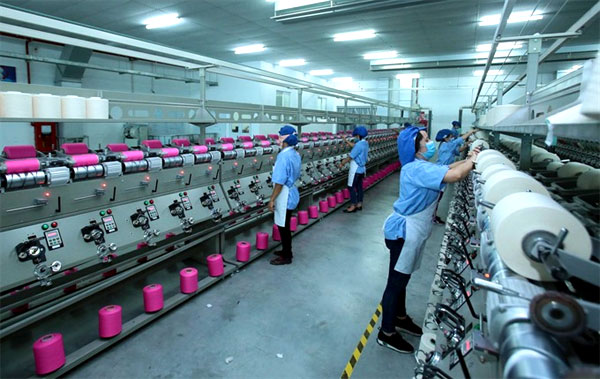Vietnam successes in inflation control in 2020
- Vietnam could face surplus of 1.5 million men by 2034
- Trade surplus swells to record high in 11 months amidst COVID-19
- 17-billion-USD trade surplus drives Vietnam’s growth
Speaking at the meeting, Director General of GSO Nguyen Thi Huong has stressed that 2020 is considered a year of success in inflation control. According to Huong, the consumer price index (CPI) in December went up 0.1% month-on-month and 0.19% year-on-year. The 2020 CPI rose by 3.23% from 2019 while basic inflation climbed by 2.31% annually.
Explaining the price hike this year, Director of the GSO’s Price Statistics Department Do Thi Ngoc said due to high shopping demand during the Lunar New Year (Tet) Festival from January-February, food prices increased by 4.51% annually, bringing up the CPI by 0.17%. Pork prices also moved up the CPI by 1.94% due to unstable supply.
 |
| Photo for illustration. Source: VNA/VNS Pham Kien. |
Rainfall and floods in the central region during October-November also hiked prices of fresh, dried and processed vegetables. Other increases were also seen in the prices of medical supplies and education services. Meanwhile, falling prices in oil and gas, flight tickets and electricity due to the COVID-19 pandemic curbed the CPI rise.
According to the GSO, basic inflation dropped from 3.25% in January to 0.99% in December, which proved the efficiency of the State Bank’s monetary policy this year.
Regarding the country's exportation, Vietnam earned US$281.5 billion from exports, up 6.5% and spent US$262.4 billion on imports, up 3.6%. Overall, its total trade revenue reached US$543.9 billion for the whole year, or a year-on-year increase of 5.1%.
It is impressive that the trade surplus has been achieved in the context of the COVID-19 pandemic taking its heavy toll on all economies, including Vietnam, said Nguyen Viet Phong, a senior GSO official.
“The trade surplus means we have capitalized on free trade agreements (FTAs) that Vietnam has signed with its external partners, especially the EU-Vietnam trade agreement, to boost exports,” said Phong.
According to the GSO official, the export surplus can be seen as a bright spot in the overall economic landscape, significantly contributing to the country’s economic growth in 2020, and having a positive impact on the exchange rate and foreign exchange reserves that Vietnam needs to support COVID-post economic recovery in 2021.
Phong noted there were 31 groups of commodities that raked in over US$1 billion from exports each, accounting for 91.9% of the total export turnover. Of them six products earned more than US$10 billion each, making up 64.3%.
Regarding the structure of export commodities in 2020, while the group of heavy industrial goods and minerals saw the export turnover rise up 11.3% to US$152.5 billion, the group of agro-forestry-fisheries products brought back US$28.7 billion, down nearly 2%.

